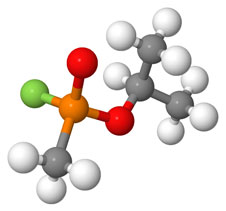
Chemical Sensing
 Protein pores can be designed for sensitivity to specific chemicals. When the target chemical or analyte interacts with the interior of the protein pore, the current through the pore is reduced in a characteristic manner. The amount of current reduction and the duration of the blockade are used to determine the identity of the molecule interacting with the channel. The frequency of the blockades is used to determine the concentration of the analyte. By employing advanced signal processing algorithms, this method, often referred to as stochastic sensing, allows for the reliable detection of multiple analytes in complex chemical environments. Unlike traditional methods of chemical sensing such as mass spectrometry and Ion Mobility Spectrometry, stochastic sensing systems require very little equipment and have the potential to be both inexpensive and compact. EBS is working with our collaborators to optimize protein pores and develop a complete automated system to detect chemical warfare agents and other pathogens.
Protein pores can be designed for sensitivity to specific chemicals. When the target chemical or analyte interacts with the interior of the protein pore, the current through the pore is reduced in a characteristic manner. The amount of current reduction and the duration of the blockade are used to determine the identity of the molecule interacting with the channel. The frequency of the blockades is used to determine the concentration of the analyte. By employing advanced signal processing algorithms, this method, often referred to as stochastic sensing, allows for the reliable detection of multiple analytes in complex chemical environments. Unlike traditional methods of chemical sensing such as mass spectrometry and Ion Mobility Spectrometry, stochastic sensing systems require very little equipment and have the potential to be both inexpensive and compact. EBS is working with our collaborators to optimize protein pores and develop a complete automated system to detect chemical warfare agents and other pathogens.
